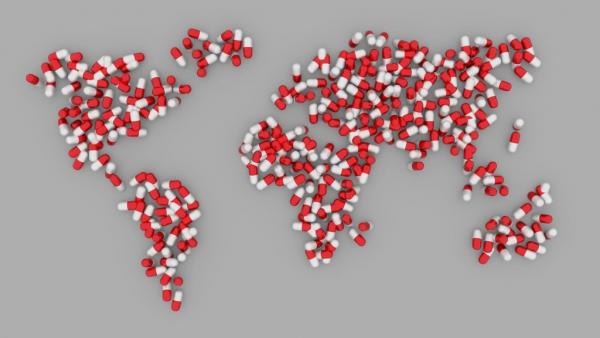WHO develops guidance on waste and wastewater management in pharmaceutical production
2 Feb 2024 by The Water Diplomat

On the 21st of December 2023, the World Health Organisation (WHO) announced a call for feedback on a draft document on the emission of antibiotics during pharmaceutical manufacturing. While the largest proportion of pharmaceuticals that reach the environment originates from their use by patients, the highest environmental concentrations found are the result of pollution from manufacturing.
Antibiotics are active chemical compounds which are produced for a specific medical purpose, and yet if their production and use are not carefully managed, these chemicals may have an effect on other organisms than those that they were developed for. At national and subnational level, many governments have set emissions standards for industrial effluents that are released into the environment, which includes standards for the release of pharmaceuticals. The WHO conducts research and develops global standards on emissions that may affect public health, and in this context it has developed a document entitled ‘WHO guidance on waste and wastewater management in pharmaceutical production’. This document was available for public consultation during December 2023 and January 2024 and the final version will be available shortly on the WHO website.
Pollution with antimicrobials, says the WHO, provides a case of special concern. In addition to direct ecological effects, environmental pollution with antimicrobials may also contribute to the development of resistance among microbes, threatening the effectiveness of antimicrobial substances fo humans, farmed and domestic animals, and crops..
The WHO recognises the great value to humanity that antibiotics provide to prevent and treat infectious disease. However, the WHO points out that the release of antibiotics into the environment has both direct ecological effects and may also contribute to the development of resistance, in both non-pathogenic and pathogenic microbes. This can threaten the effectiveness of antimicrobials as used to treat conditions in humans, animals and crops and has the potential to contribute to the emergence and spread of Antimicrobial Resistance (AMR). AMR occurs when microbes evolve mechanisms that protect them from the drugs that have been designed to kill them. As the WHO argues, AMR can threaten the very core of modern medicine and the sustainability of an effective, global public health response to the enduring threat from infectious diseases.
As a result, in 2015 the World Health Assembly adopted a global action plan on AMR. Among the interventions needed is the development of guidance and tools on the management of manufacturing waste containing antimicrobials. There is an internationally recognized need, stemming from a World Health Assembly resolution and the Global Action Plan on AMR, for international evidence-based guidance and tools on the management of manufacturing waste containing antimicrobials.
